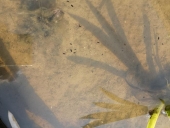









My project thread
Agriculture collects solar energy two-dimensionally; but silviculture collects it three dimensionally.




Nancie Baker wrote:The aquarium water test strips I bought do not read ammonia levels; the pH is fine, the nitrites/nitrates are high, and the alkalinity was "ideal".
My project thread
Agriculture collects solar energy two-dimensionally; but silviculture collects it three dimensionally.












My project thread
Agriculture collects solar energy two-dimensionally; but silviculture collects it three dimensionally.








The devil haunts a hungry man - Waylon Jennings





 1
1




Sometimes the answer is nothing





 1
1




My project thread
Agriculture collects solar energy two-dimensionally; but silviculture collects it three dimensionally.










My project thread
Agriculture collects solar energy two-dimensionally; but silviculture collects it three dimensionally.








Cj Verde wrote:Here's a chart showing toxicity of ammonia based on temp & pH:
High nitrates don't matter too much but high nitrites are toxic. Sea salt can help mitigate. There's a ratio I don't have handy but I can look up.
Don't feed at all till ammonia is 0.
LISTEN, RELATE, TRANSITION 








My project thread
Agriculture collects solar energy two-dimensionally; but silviculture collects it three dimensionally.


























 1
1






|
There are 10 kinds of people in this world. Those that understand binary get this tiny ad:
Homestead Pigs Course
https://permies.com/wiki/365748/Homestead-Pigs
|


